#lorawan
Explore tagged Tumblr posts
Text
When you say GPS tracker Pro…what is PRO?

An element to consider is that a Pro tracker is more than the tracking element. It can combine multiple sensors within one unit, multiplying the functionalities available. Multi-sensor integration (temperature, humidity, tilt, motion)uses advanced connectivity (NB-IoT, LTE-M, LoRaWAN, satellite fallback). It is likely that they include data encryption and secure cloud integration. This makes a PRO tracker a a multi-sensor powerhouse, not just a locator beacon.
#BeiDou#Constellation#Galileo#GLONASS#GNSS#GPS#IP67#Location#LoRaWAN#LTE-M#Multi – Sensor#NB-IoT#Professional#Tracker
1 note
·
View note
Text
What is the difference between LoRa and LoRaWAN?
Introduction:
LoRaWAN serves as the communication protocol connecting the LoRa signal (which carries sensor data) to the respective application(s). To simplify, think of LoRa as the radio signal transporting the data, while LoRaWAN acts as the governing framework that dictates how this data travels and communicates within the network.

What is LoRa?
LoRa, short for Long Range, is a wireless technology known for its extended range and energy-efficient characteristics. It operates within unlicensed wireless frequencies, similar to how Wi-Fi utilizes the unregulated 2.4 GHz and 5 GHz bands. The specific frequency employed by LoRa varies depending on the geographic location of the deployment. For instance, in North America, LoRa operates in the 915 MHz band, while in Europe, it utilizes the 868 MHz band and in India it is 865 MHz to 867 MHz.
It is crucial to be aware of the legally permitted frequencies for LoRa deployments in each respective location. In terms of its communication range, LoRa can transmit data up to a distance of 10 kilometers in ideal conditions with a clear line of sight.
Low Power Wide Area (LPWA) technology can be categorized into two main types. On one hand, there's cellular LPWA, which utilizes mobile networks. Examples of cellular LPWA technologies include Narrowband IoT (NB-IoT) and Long Term Machine Type Communications (LTE-M). On the other hand, there's non-cellular LPWA like LoRa, which disseminates data by dividing it into encoded packets and transmitting them across various frequency channels and data rates.
What is LoRaWAN?
LoRaWAN is a network protocol that serves as the bridge between the LoRa signal, which carries sensor data, and the applications that use this data. In simpler terms, LoRa represents the radio signal responsible for transmitting the data, while LoRaWAN is the communication protocol that manages and defines how this data is transmitted across the network.
LoRaWAN offers several valuable advantages, including low power consumption, extensive coverage range, and cost-effective connectivity for devices that don't require high data transfer speeds. It's an excellent choice when cellular connectivity is too expensive or Wi-Fi coverage is unavailable. Some of the most compelling use cases for LoRaWAN include:
Agriculture: LoRaWAN's long-range capabilities provide reliable connectivity for rural applications where high data transfer rates are not necessary, making it ideal for agricultural applications. LoRaWAN sensors for agriculture are used for cattle management, soli monitoring, and temperature monitoring.
Asset Tracking and Logistics: LoRaWAN supports cost-effective location tracking of assets, with optimized battery life, making it a practical choice for asset management and logistics.
Smart Metering: LoRaWAN's sensors have the ability to reach even in underground utility locations makes it a suitable choice for smart metering applications.
Smart Homes: LoRaWAN can penetrate obstacles like walls and supports battery-powered devices with low data consumption, making it an attractive connectivity option for smart home applications.LoRaWAN sensors for smart homes are used for Air quality monitoring, water quality monitoring, and temperature & humidity monitoring.
Healthcare: The low power consumption, affordability, and reliability of LoRa technology make it suitable for connected health applications. IoT solutions based on LoRa hardware can monitor high-risk patients or systems around the clock, ensuring comprehensive health and medical safety management.LoRaWAN Gateways and sensors enhance production practices, enable efficient tracking and monitoring of shipments, and facilitate the development of cutting-edge medications.
Industrial Applications: LoRa-enabled devices and sensors play a crucial role in the transformation of industrial IoT operations like mentioned above. They digitize legacy processes and equipment, leading to increased profits, lower costs, and enhanced efficiency. These devices provide real-time data for predictive maintenance, machine health monitoring, reduced downtime, and more.
3 notes
·
View notes
Text
Container Tracker
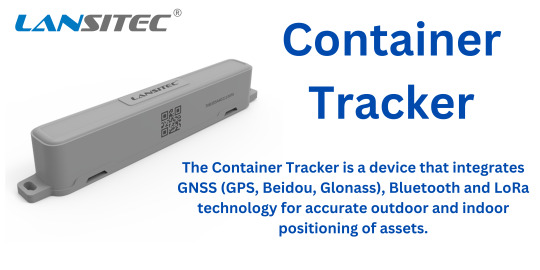
The Container Tracker is a device that integrates GNSS (GPS, Beidou, Glonass), Bluetooth and LoRa technology for accurate outdoor and indoor positioning of assets. It has an IP68 enclosure that provides protection against water and dust ingress. It has a large battery capacity that can support up to 180,000 Bluetooth tracking messages over 30,000 GPS coordinates. It supports tracking up to 100 Bluetooth beacons, and also supports UUID change to avoid interference from other devices.
For More:
#lansitec#technology#iot#lora#tracking#lorawan#asset management#Container tracker#Industrial Tracker#GNSS Industrial Tracker#LoRaWAN GNSS Tracker
2 notes
·
View notes
Text
LoRaWAN Market Growth and Opportunities: Size, Trends, and Key Players
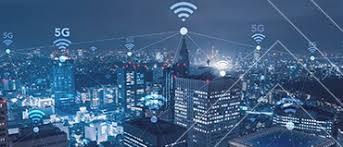
The LoRaWAN market is rapidly transforming the IoT communication landscape with its low-power, long-range capabilities. As industry requirements evolve, LoRaWAN solutions are witnessing accelerating adoption across multiple sectors, driven by increased demand for smart connectivity and IoT integration. The global LoRaWAN market size is estimated to be valued at USD 4.98 billion in 2025 and is expected to reach USD 40.07 billion by 2032, exhibiting a robust CAGR of 34.7% from 2025 to 2032.LoRaWAN Market Size asreflects expanding market demand driven by increasing adoption in smart cities, agriculture, and industrial automation. The LoRaWAN market report highlights significant shifts in industry trends, as enterprises prioritize low-power wide-area network solutions to enhance operational efficiency. Get more insights on,LoRaWAN Market
0 notes
Text
📢 Hey! We've got something super cool to share. This time, we’re diving deeper into #Elecrow's precision testing and quality assurance system for #LoRa modules. Just like before, every single device goes through a thorough check to make sure everything is working perfectly. Let's check how it works! 👇 https://www.elecrow.com/blog/testing-quality-assurance-system-for-lora-modules.html
1 note
·
View note
Text
Harnessing Smart Water Metering for Efficient Water Management in India
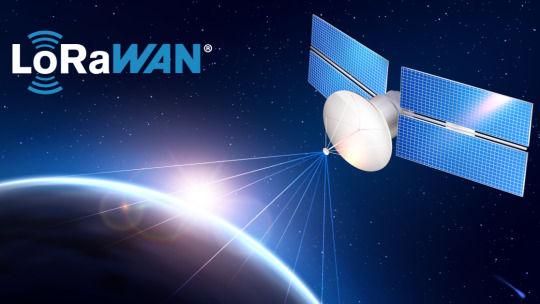
Water scarcity is becoming an undeniable challenge, especially in rapidly urbanizing regions of India. Traditional water management systems, reliant on manual readings and reactive maintenance, often result in inefficiencies, wastage, and inaccurate billing. As the demand for smarter infrastructure rises, smart water meters are leading the transformation — redefining how we monitor, distribute, and conserve water.
The Shift Toward Smart Water Meters in India
A Smart Water Meter in India is more than a digital upgrade; it’s a foundational tool for building sustainable cities. These devices automatically collect consumption data, enabling real-time tracking, leak detection, and data-driven decision-making.
Municipal bodies, residential complexes, and industrial users are steadily adopting smart metering solutions to:
Monitor usage patterns
Generate accurate, automated billing
Detect anomalies and leaks instantly
Support equitable water distribution
This proactive approach significantly reduces water loss and operational costs, contributing to long-term sustainability.
Why LoRaWAN is the Backbone of Smart Metering
The technology enabling this smart revolution is just as important as the hardware itself. LoRaWAN in India has emerged as a key enabler for remote meter connectivity, especially in challenging terrains or dense urban environments.
LoRaWAN (Long Range Wide Area Network) offers:
Long-range wireless communication (up to 10 km)
Ultra-low power consumption
Scalable, secure infrastructure ideal for smart cities
Cost-effective deployment across residential and industrial sectors
This makes LoRaWAN-based metering systems an ideal choice for Indian utility providers seeking robust performance at scale.
Data-Driven Water Governance with IoT Integration
Smart water meters integrated with IoT platforms give utility providers a complete dashboard view of consumption trends, pressure levels, flow data, and user behavior. This empowers authorities to:
Implement demand-side management policies
Plan infrastructure upgrades with predictive insights
Encourage responsible consumption through transparent data access
Such intelligent frameworks help close the gap between resource availability and demand — a key priority in India’s water-stressed zones.
Real-World Applications and Growing Adoption
Across India, several smart city projects and public-private partnerships are turning to digital water metering as a core component of urban infrastructure. In residential societies, it encourages accountability among users. In commercial buildings, it streamlines operations, while for municipalities, it helps curb non-revenue water.
A leading example of such implementation is seen through innovative providers like WCO Global, which offers a suite of IoT-enabled Smart Water Metering Solutions. Their expertise in LoRaWAN in India, ultrasonic metering, and MeterLink analytics platform demonstrates how technology can meet the real-world demands of Indian cities and industries.
Benefits of Smart Water Metering at a Glance
Transparency in water consumption
Prevention of water theft and leakages
Remote monitoring even in hard-to-reach areas
Billing accuracy and reduced disputes
Support for smart grid infrastructure
Looking Ahead: The Future of Water Management
As India continues its push for digital transformation under programs like Smart Cities Mission and Jal Jeevan Mission, smart water metering will no longer be optional — it will be essential. Government bodies, urban planners, and private operators must collaborate to deploy scalable, future-ready systems.
Organizations embracing this shift today will be better equipped to manage water equitably, reduce losses, and drive environmental stewardship.
Final Thoughts
Smart water metering, powered by reliable communication protocols like LoRaWAN, is revolutionizing water governance in India. It’s not just about technology — it’s about building resilient systems that value every drop.
Whether you’re a utility provider, infrastructure developer, or part of a residential society, the path to efficient water management begins with smarter insights. Learn more about intelligent water metering technologies at WCO Global.
0 notes
Text
#IoT#LoRaWAN#Kerlink#IoTSWC2025#TechInnovation#SmartConnectivity#electronicsnews#technologynews#electronics#innovation#ai
0 notes
Text
0 notes
Text
WEBCAST JAN 16 - IPNSIG Academy: How to Benefit Today from Future Interplanetary Internet Infrastructure: Why and How to Join IPNSIG's Project Working Group
On Thursday January 16, 2024, at 5pm-6pm EST (23:00-23:00 UTC) the Interplanetary Networking Special Interest Group (IPNSIG) presents an IPNSIG Academy Keynote ‘How to Benefit Today from Future Interplanetary Internet Infrastructure: Why and How to Join IPNSIG’s Project Working Group‘. How can the Interplanetary Internet help us solve terrestrial networking challenges today? This keynote explores…
0 notes
Text
What are the major use cases and industries benefiting from LoRaWAN-based solutions?
1 note
·
View note
Text
Water Metering: Competitive advantage for scaled IoT
#1-Wire#Bluetooth#Councils#gateway#LoRaWAN#Modbus#Municipalities#NB-IoT#Network#Predictive Analytics#Real-time#Scale#Supply#Utilities#Water Meter
0 notes
Text
Smart Helmet Tracker with Sensors for Construction Accident Prevention
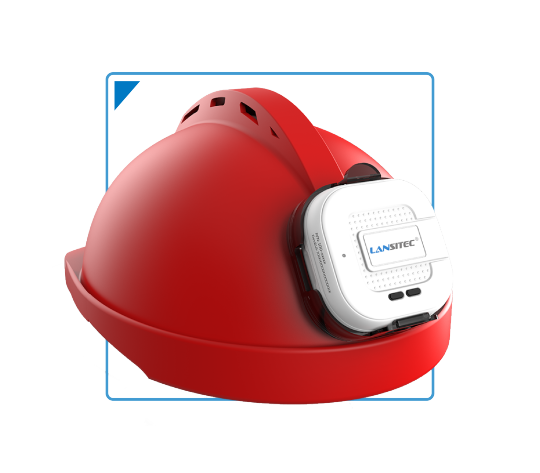
Construction-specific smart helmets use a variety of sensors, including temperature sensors, GPS, gyroscopes, accelerometers, and more. These sensors keep an eye on the wearer's vital signs, head movements, and surroundings all the time. In order to enable proactive accident prevention, the gathered data is processed in real time to deliver quick insights and early alerts. Lansitec Helmet Sensor is designed based on GNSS, Bluetooth5.0 and LoRa technology. It supports indoor and outdoor tracking. It supports various features which contribute to easy management in industrial settings.
For More:
#technology#lansitec#iot#lora#lorawan#asset management#Helmet Tracker#Helmet Sensor#Bluetooth#Sensor
2 notes
·
View notes
Text

The 5G IoT Market size is forecast to reach $40.5 billion by 2026, growing at a CAGR 61% from 2022 to 2026.
#5GIoT#IoT#5G#Industry40#SmartCities#ConnectedDevices#DigitalTransformation#IIoT#AIoT#LoRaWAN#NBIoT#LPWAN
0 notes
Text
Data Security and Precision Control: Precision Application of Smart Irrigation Using LoRa Technology and LoRaWAN Gateway
The application characteristics of LoRa modules in smart irrigation technology are mainly reflected in the following aspects:
Low Power Consumption: LoRa modules are characterized by extremely low power consumption, enabling devices to operate for extended periods on battery power. This reduces the hassle of frequent battery replacements and enhances the system's lifespan and reliability.
Anti-Interference Capability: LoRa technology has excellent anti-interference capabilities., ensuring stable communication quality even in environments with multiple radio signals.
Long-Distance Transmission: Utilizing low-frequency transmission, spread spectrum technology, and high-sensitivity receivers, LoRa modules can achieve wireless communication over distances ranging from several kilometers to over ten kilometers.
MESH Self-Organizing Network: LoRa modules can establish communication connections through self-organizing networks, eliminating the need for complex infrastructure and network wiring.
Precision Irrigation: LoRa modules offer stable and accurate data transmission, enabling real-time delivery of information such as soil moisture and weather conditions.
High Penetration: LoRa technology boasts strong signal penetration and stability, ensuring reliable signal transmission even in complex environments.
Multi-Node Support: LoRa modules support applications with multiple nodes. A single LoRa gateway can connect multiple sensor nodes, forming a complete network system for extensive, multi-point monitoring and management.
Data Security: LoRa modules provide high data security, employing encryption technology to protect data during transmission, preventing data theft or tampering, and ensuring the confidentiality and integrity of agricultural data.
Wide Coverage: LoRa technology can achieve wide coverage, typically ranging from several kilometers to over ten kilometers, without the repeaters.
Module Compatibility: LoRa modules are compatible with various types of sensors and control devices, offering a high level of system integration and facilitating seamless cooperation among different devices.

How the LoRa modules achieve precision irrigation in smart irrigation?
Remote Monitoring: Using LoRa modules, the irrigation system can achieve remote monitoring and control. Users can access real-time environmental data such as soil moisture and temperature from a distance and remotely control irrigation equipment, enabling precision irrigation.
Data Analysis: After the cloud platform receives sensor data, it analyzes and processes the information to promptly understand soil moisture conditions, providing a scientific basis for irrigation decisions.
Remote Control of Equipment: LoRa modules transmit commands to various irrigation nodes through long-distance, low-power wireless communication, controlling valve switches, irrigation times, and irrigation amounts.
Timed Irrigation: The irrigation schedule can be preset, and the LoRa module can be used to control the irrigation equipment to irrigate at the best time.
Feedback Mechanism: After irrigation is completed, the system re-monitors soil conditions and feeds the data back to the central control system.
Functions of the LoRaWAN Gateway LG1301-PF in Smart Irrigation Systems
Features of the LG1301-PF Gateway
LG1301-PF is the LoRaWAN gateway. It can work with any LoRaWAN node which comply Standard LoRaWAN protocol V1.0.
The gateway use linux platform as host.It mainly consists of concentrator ,GPS module ,WIFI and Ethernet. The GPS module send NMEA frames containing time and geographical coordinates data to the host. The GPS module also output one pulse to the sx1301 per second.
The gateway receives the RF data from nodes and sends it to the server. It also receive data from the server and transmit to the nodes. The gateway connects to the server via Ethernet or WiFi.
Support for LoRaWAN Protocol: Adapts to the LoRaWAN protocol, enabling the device to communicate with standard LoRaWAN networks for remote data transmission and management.
UART Interface: Provides a UART interface for convenient data exchange and integration with other devices or sensors.
AES128 Encryption: Uses the AES128 encryption algorithm to ensure the security and privacy of data transmission.
8-Channel Simultaneous Communication: Supports up to 8 channels of communication simultaneously
Configurable Parameters: Users can flexibly configure various parameters according to specific application needs.
Global Positioning System Support: GPS functionality enables precise positioning and tracking of the device.
Remote Transmission: Supports remote data transmission, allowing real-time data transfer and management between the device and the cloud via an internet connection.
Frequency Band Support: Covers multiple frequency bands (such as EU433M, EU868M, KR920M, AS923M, CN780M, CN470M, US915M, AS915M, etc.).
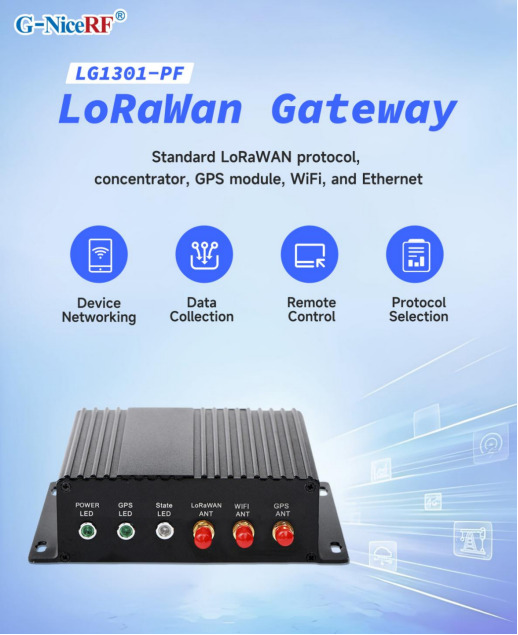
By using NiceRF LoRa gateway devices, sensor equipment in the irrigation field (such as temperature sensors, humidity sensors, light sensors, CO2 sensors, etc.) can be connected in real-time. These sensors collect data in real-time and periodically upload it to the cloud platform or local host computer via LoRa modules. This setup enables remote monitoring, fault alarms, equipment management, and provides scientific and reliable data support for adjusting irrigation strategies.
Data Monitoring Function: The sensor equipment monitors data such as air temperature, air humidity, CO2 levels, light intensity, soil moisture, and soil temperature. This data is transmitted through the LoRa gateway to the cloud platform, allowing users to analyze and process the information conveniently.
Remote Control and Adjustment: The LoRa gateway can connect to irrigation equipment, enabling remote control of the irrigation system. By sending commands from the cloud platform to the LoRa gateway, users can adjust irrigation equipment, such as remotely starting or stopping the equipment or adjusting irrigation parameters. This allows for intelligent irrigation based on feedback from soil moisture sensors, providing precise water management, reducing waste, and improving irrigation efficiency.
Anomaly Alarms and Warnings: The LoRa gateway can monitor abnormal conditions in the farmland environment and send alarm messages to users through the cloud platform. For instance, if soil moisture levels are too low or too high, the LoRa gateway can promptly issue an alert, reminding farmers to take appropriate irrigation measures.
Energy Efficiency Optimization: The gateway is designed with low power consumption features. By optimizing energy management and data transmission frequency, it effectively extends the operating time of the equipment, reduces energy costs, and enhances system sustainability.
For details, please click:https://www.nicerf.com/products/ Or click:https://nicerf.en.alibaba.com/productlist.html?spm=a2700.shop_index.88.4.1fec2b006JKUsd For consultation, please contact NiceRF (Email: [email protected]).
0 notes
Text
What is LoRaWAN and how does it work?
LoRaWAN technology facilitates robust and energy-efficient communication for Internet of Things (IoT) devices over long distances. Leveraging low-power signals, it supports diverse applications from smart agriculture to urban infrastructure, ensuring reliable connectivity and efficient data exchange in challenging environments worldwide.

0 notes